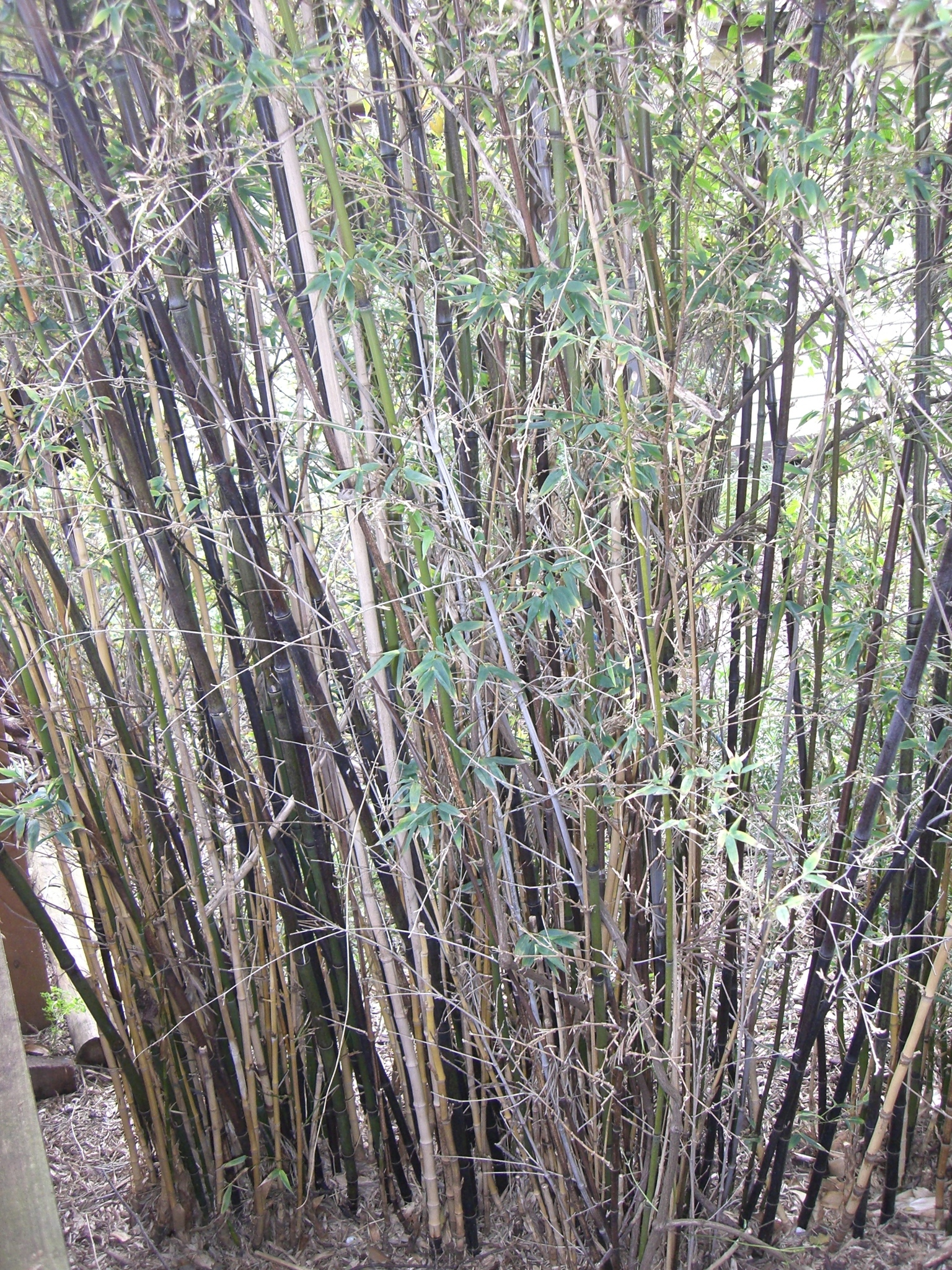
Greek phyllon – leaf, stachys – spike, referring to the leafy flower clusters.
Mostly tall perennial bamboos with short- to long-running rhizomes. Stems woody, with internodes short and hollow, flattened or grooved on alternating sides of the stem above the axillary bud, sometimes with a white bloom below the node. Branches generally 2 but often a third small one in the middle that may be shed. Leaves with a deciduous sheath; blade short-stalked and with an articulated false stalk, nerves in a brick-like mosaic. Inflorescence a terminal panicle but rarely flowering or only doing so when very old. Spikelets with 1-4 florets. Glumes mostly unequal.
The 2 species described have naturalised in Australia. Flowering is extremely rare and generally occurs after many years growth. About 30 species and many cultivars are available in the Queensland nursery industry for use in tropical gardens. Extreme care is needed with plants in this genus, as rhizomes are frequently invasive, especially in warmer areas.
Division, or stem cuttings.
An economically important genus, especially in Asia, with uses including: construction, furniture, fishing rods, walking sticks, crafts, edible young bamboo shoots and musical instruments.
Hollow stems with internodes flattened or grooved below branches (mostly 2 occasionally with a small third middle one).
About 51+ species from warm-temperate Asia. 2 naturalised species occur in Australia and they are also quite widely cultivated.
McClure (1957).
Source: (2005). Poaceae. In: . Horticultural Flora of South-eastern Australia. Volume 5. Flowering plants. Monocotyledons. The identification of garden and cultivated plants. University of New South Wales Press.
